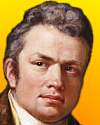
On 25 Apr 1769, Marc Isambard Brunel was born, the French-born English engineer and inventor who solved the historic problem of tunneling through the water-bearing strata beneath a navigable waterway and built the Thames Tunnel.
He invented a tunneling shield to support the work face while digging it away. The task was arduous, with many problems to overcome, and took 18 years (with a 7-year hiatus). Yet he finally completed the world's first tunnel under a navigable river.
It first opened, on 25 Mar 1843, as a pedestrian attraction because funds were not available to build the approach roads for its intended use for freight transfer across the Thames. However, it was adopted for use by the early underground railway. To this day it is the oldest tunnel under the Thames in the London underground network.
The chapter in The Great Triumphs of Great Men (1875) titled Sir Mark Isambard Brunel is mostly a breath-taking description of the difficulties faced by the workers, as the Thames water irrupted into the tunnel on several occasions. Although Marc Brunel masterminded the construction of the tunnel, and made it possible with the invention of the tunneling shield, the triumph must be shared by all the great men at the work face.

On 25 Apr 1900, Wolfgang Pauli was born, who was awarded the 1945 Nobel Prize in Physics for establishing his Pauli exclusion principle, a contribution to quantum theory of major importance. Today's book pick is: No Time to be Brief: A Scientific Biography of Wolfgang Pauli, by Charles P. Enz. The author retraces the life of the physicist Wolfgang Pauli, analyzes his scientific work, and describes the evolution of his thinking in this fascinating portrait of the scientist. The author also conveys the intellectual ferment and excitement of other notable physicists at the time when quantum theory was being developed.
It would be incomplete, however, without a rendering of Pauli’s sarcastic wit and, most importantly, of the world of his dreams. It is through the latter that quite a different aspect of Pauli's life comes in, namely his association with the psychology of C.G. Jung and his school.
It is available from Amazon, typically about New from $65.00. Used from $44.78. (As of earlier time of writing - subject to change.)
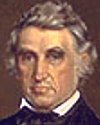 | I submit a body of facts which cannot be invalidated. My opinions may be doubted, denied, or approved, according as they conflict or agree with the opinions of each individual who may read them; but their worth will be best determined by the foundation on which they rest—the incontrovertible facts. |
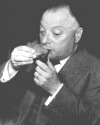 | The fact that XY thinks slowly is not serious, but that he publishes faster than he thinks is inexcusable. |
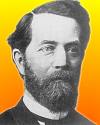 | The greatest mathematicians, as Archimedes, Newton, and Gauss, always united theory and applications in equal measure. |
| Before you look at today's web page, see if you can answer some of these questions about the events that happened on this day. Some of the names are very familiar. Others will likely stump you. Tickle your curiosity with these questions, then check your answers on today's web page. | |
| Births | |
 | Wolfgang Pauli, born 25 Apr 1900 was awarded the Nobel Prize for Physics in 1945 for his discovery (1925) of the condition that in an atom no two electrons can occupy the same quantum state simultaneously. He moved to the U.S. during WW II, where he became an American citizen, though a few years later took a teaching post in Europe. In what country was Pauli born? |
 | An Italian inventor, born 25 Apr 1874, investigated the "Hertzian Waves" (the radio waves Hertz first produced in his laboratory a few years earlier) leading to the creation of wireless telegraphy and what we now know as radio. What is the name of this inventor? |
| Deaths | |
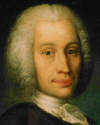 | Anders Celsius (1701- 1744) was a Swedish astronomer, physicist and mathematician who is famous for the temperature scale he developed. He and his assistant Olof Hiortner discovered an effect that was associated with the aurora borealis. What was the effect Celcius discovered associated with the aurora borealis? |
| Events | |
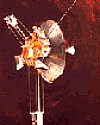 | On 25 Apr of a certain year, space probe Pioneer 10 crossed the orbit of Pluto, the outermost planet, to continue its voyage into the universe beyond our solar system. In which decade did Pioneer 10 cross the orbit of Pluto? |
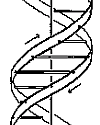 | On 25 Apr of a certain year, Nature journal published the structure of DNA, as suggested in a one-page article by James Watson and Francis Crick. This work earned the pair of scientists a Nobel Prize. In which decade was the DNA structure article published? |
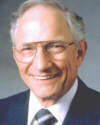 | On 25 Apr of a certain year, the first U.S. patent for an integrated circuit was issued by Robert Noyce. In which decade was the integrated circuit patent issued? |
Fast answers for the previous newsletter for April 24: Whooping crane • ytterbium • as a German, he experienced strong pressure including arrest and imprisonment from the Nazi government because Hitler had been enraged by the award of a Nobel Peace Prize to another German in a concentration camp • Tennessee • the decade including the year 1970.
 If you enjoy this newsletter, the website, or wish to offer encouragement or ideas, please send feedback by using your mail reader Reply button.
If you enjoy this newsletter, the website, or wish to offer encouragement or ideas, please send feedback by using your mail reader Reply button. Your click on a Facebook, StumbleUpon, or other social button on the site webpages is also a welcome sign of appreciation. Thank you for using them.
© This newsletter is copyright 2020 by todayinsci.com. Please respect the Webmaster's wishes and do not put copies online of the Newsletter — or any Today in Science History webpage. (If you already have done so, please remove them. Thank you.) Offline use in education is encouraged such as a printout on a bulletin board, or projected for classroom viewing. Online, descriptive links to our pages are welcomed, as these will provide a reader with the most recent revisions, additions and/or corrections of a webpage. For any other copyright questions, please contact the Webmaster by using your mail reader Reply button.
--
If you do not want to receive any more newsletters, Unsubscribe
To update your preferences and to unsubscribe visit this link
Executive Real Estate Business Class
-
"It was like a man with wings. It wasn't like anything you'd see on TV or in a monster movie." ...
About the publisher
Search This Blog
Blog Archive
-
▼
2021
(585)
-
▼
April
(57)
- On This Day for April 30 - George Washington inaug...
- Newsletter for Friday 30 April.
- On This Day for April 29 - British royal wedding, ...
- Newsletter for Thursday 29 April.
- On This Day for April 28 - Benito Mussolini execut...
- Newsletter for Wednesday 28 April.
- On This Day for April 27 - Independence for Sierra...
- Newsletter for Tuesday 27 April.
- On This Day for April 26 - Chernobyl nuclear accid...
- Newsletter for Monday 26 April.
- On This Day for April 25 - Hubble Space Telescope ...
- See How They Tracked Down Bin Laden
- Newsletter for Sunday 25 April.
- On This Day for April 24 - Installation of Pope Be...
- Newsletter for Saturday 24 April.
- On This Day for April 23 - Voting for Eritrea's in...
- Earth Day Bonus: Become a Climate Action Expert
- On This Day for April 22 - First Earth Day, Miguel...
- On This Day for April 21 - French elections held, ...
- Newsletter for Wednesday 21 April.
- On This Day for April 20 - Explosion on the Deepwa...
- Newsletter for Tuesday 20 April.
- On This Day for April 19 - American Revolution beg...
- Newsletter for Monday 19 April.
- On This Day for April 18 - The midnight ride of Pa...
- Newsletter for Sunday 18 April.
- On This Day for April 17 - Canada Act proclaimed, ...
- Newsletter for Saturday 17 April.
- On This Day for April 16 - Harriet Quimby's flight...
- Newsletter for Friday 16 April.
- On This Day for April 15 - Sinking of the Titanic,...
- Newsletter for Thursday 15 April.
- On This Day for April 14 - Abraham Lincoln shot, J...
- On This Day for April 13 - Alfred Dreyfus imprison...
- Newsletter for Tuesday 13 April.
- On This Day for April 12 - Launch of first space s...
- Newsletter for Monday 12 April.
- John of Gaunt: father of England’s medieval monarchy
- On This Day for April 11 - Napoleon's abdication a...
- Newsletter for Sunday 11 April.
- On This Day for April 10 - Anschluss approved in A...
- On This Day for April 9 - Fall of Baghdad, Jørn Ut...
- Newsletter for Friday 9 April.
- On This Day for April 8 - Celebration of the Buddh...
- On This Day for April 7 - Jack Nicklaus's first Ma...
- Newsletter for Wednesday 7 April.
- On This Day for April 6 - Olympics revived, Raphae...
- On This Day for April 5 - Battle of Maipú, Colin P...
- The history and origins of Easter
- On This Day for April 4 - Martin Luther King, Jr.,...
- Newsletter for Sunday 4 April.
- On This Day for April 3 - Implementation of the Ma...
- Newsletter for Saturday 3 April.
- On This Day for April 2 - Death of Pope John Paul ...
- Newsletter for Friday 2 April.
- On This Day for April 1 - Creation of Nunavut, Ser...
- Newsletter for Thursday 1 April.
-
▼
April
(57)
-
Blogroll
-
About
HistoryFact










0 comments:
Post a Comment